Plowing the Land: How and Why Should You Do It?
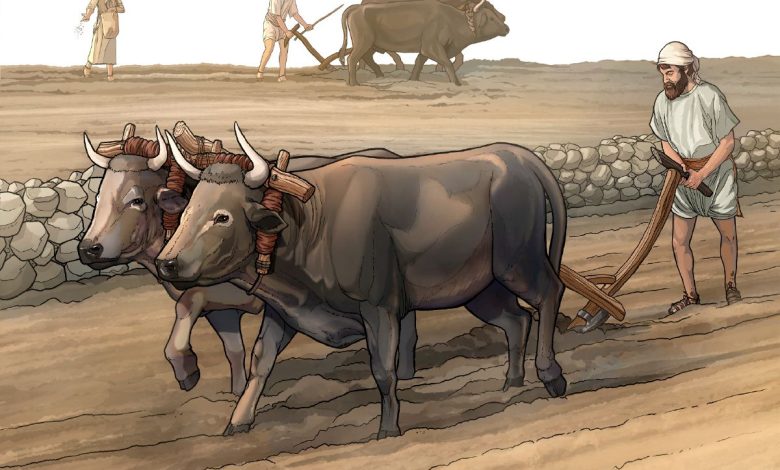
A plow is an agricultural tool used to loosen or remove soil before sowing or planting.
Plows were traditionally pulled by oxen and horses, but on modern farms they are pulled by tractors. A plow may have a frame of wood, iron, or steel, with a blade attached to cut and loosen the soil.
It has been central to agriculture for most of history. The first plows did not have wheels; the Romans called it aratrum. Celtic peoples began using wheeled plows in Roman times.
The main purpose of the plow is to remove the top soil, bringing fresh nutrients to the surface and burying weeds and crop debris to rot. The trenches cut by the plow are called furrows.
In modern usage, a plowed field is normally allowed to dry out and then plowed before planting. Plowing and cultivating the land evens out the content of the top 12 to 25 centimeters of soil, where most plant roots grow.
At first, plows were powered by humans, but the use of farm animals was considerably more efficient. The first animals that worked were oxen. Later, horses and mules were used in many areas.
With the industrial revolution came the possibility of using steam engines to pull plows. These, in turn, were replaced by internal combustion tractors at the beginning of the 20th century.
The use of the traditional plow has decreased in some areas threatened by soil damage and erosion. Shallow plowing or other less invasive conservation tillage is used instead.
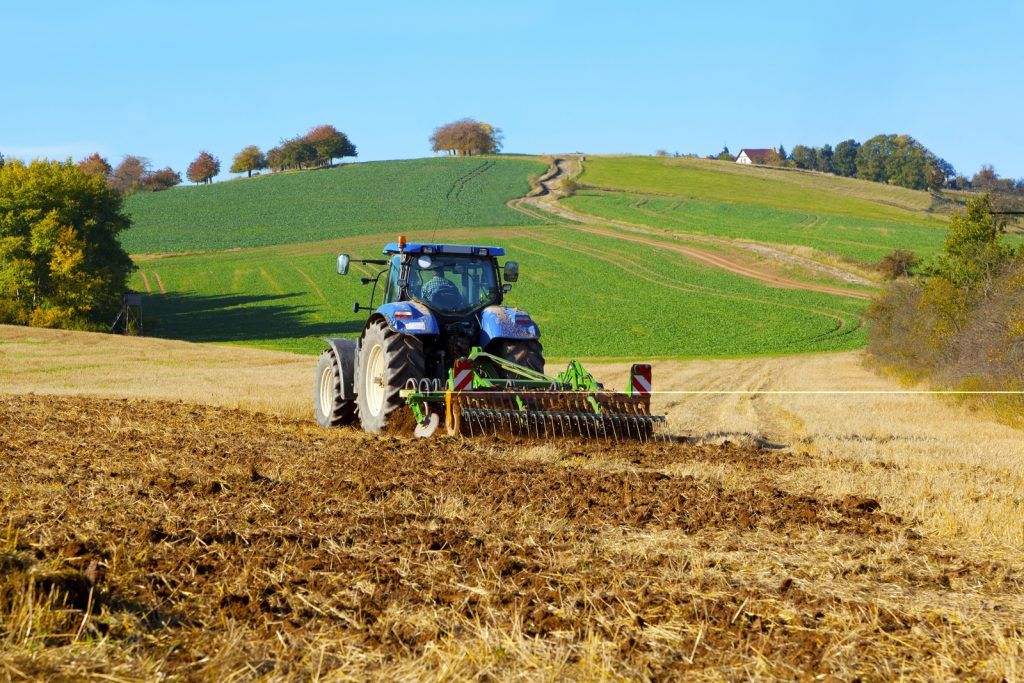
When should the land be plowed?
Before planting any type of plant, you need to check the state of the soil. If it looks like a messy set, it’s time for you to plow. This procedure consists of removing the soil from a certain space so that it becomes light and loose and thus the crops develop better.
Running it can be as easy or complex as your experience in this matter, but don’t worry because here we will give you valuable data. So pay close attention because we will answer the most complex question of all: When should the land be plowed?
Under what conditions is it better to plow the land?
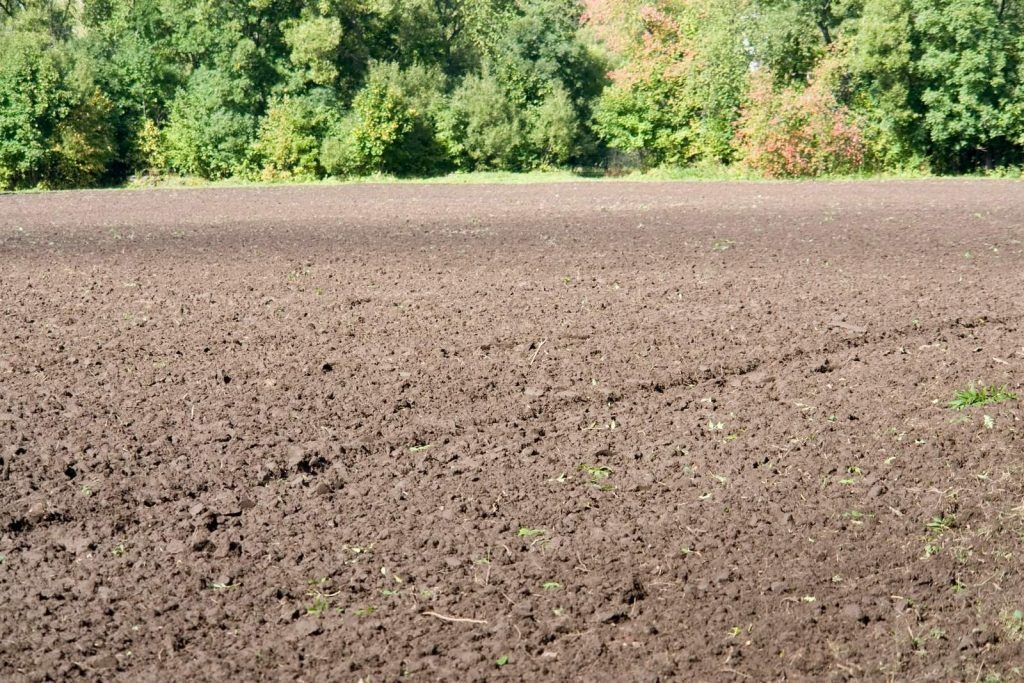
To plow the land, it is necessary to consider the level of humidity that it has, since the ideal is that it be relatively dry to facilitate mobility. A moist soil will result in a very compact and muddy soil, so the work could become complicated and not give the results you expect.
On the contrary, when it is excessively dry, the work could require more energy than recommended and cause damage to the structure itself. Humidity is recommended to be relative, ensuring a terrain that is neither too dry nor too muddy.
A very simple way to check this is to walk on it and observe its behavior.The ideal is that the ground sinks or deforms with each step that is taken, but it should not be exaggerated because we would be facing a soil that is too wet.
On which side do you have to start tilling the land?
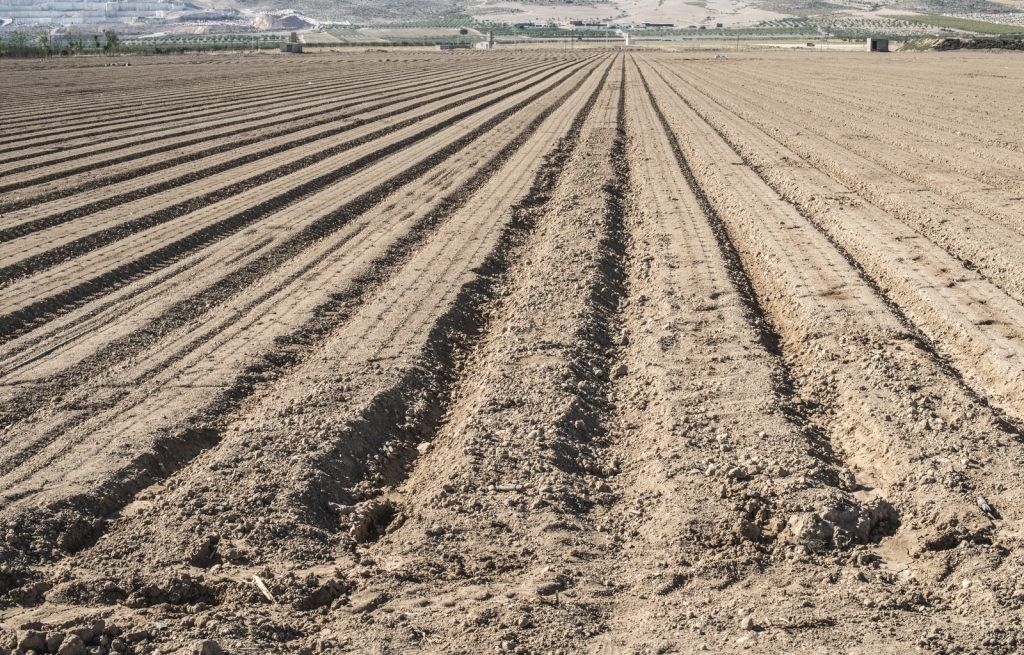
The earth should always start tilling from the most superficial layer until reaching the deepest.The ability to access the lower areas will depend on the tools and machinery available.
In a home garden, a simple hoe can be more than enough, but in large fields that require a lot of work, the use of tractors, for example, is necessary.
What is the reason for plowing the soil?
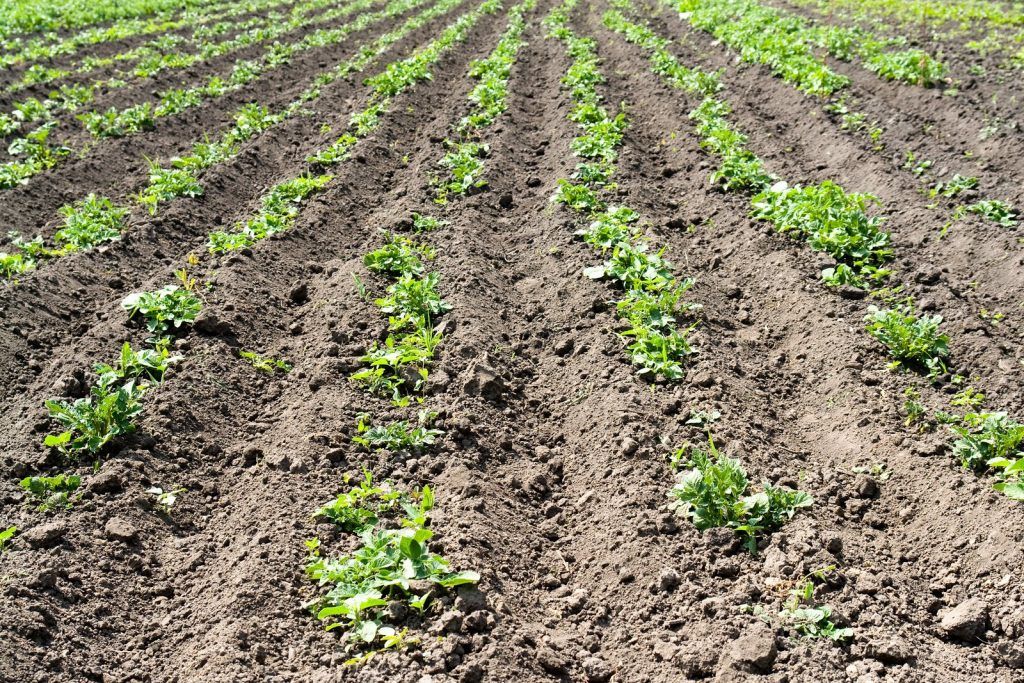
The main reason for plowing the soil is to improve the conditions it has so that the plants get an ideal environment in which to develop.
Plants live thanks to the soil and ensuring that it is optimized to receive them and offer them what they need is the mission of the plow. This action is even more important in crops that grow underground, such as carrots, garlic, potatoes, onions, among others.
What characteristics of the soil change with the plow?
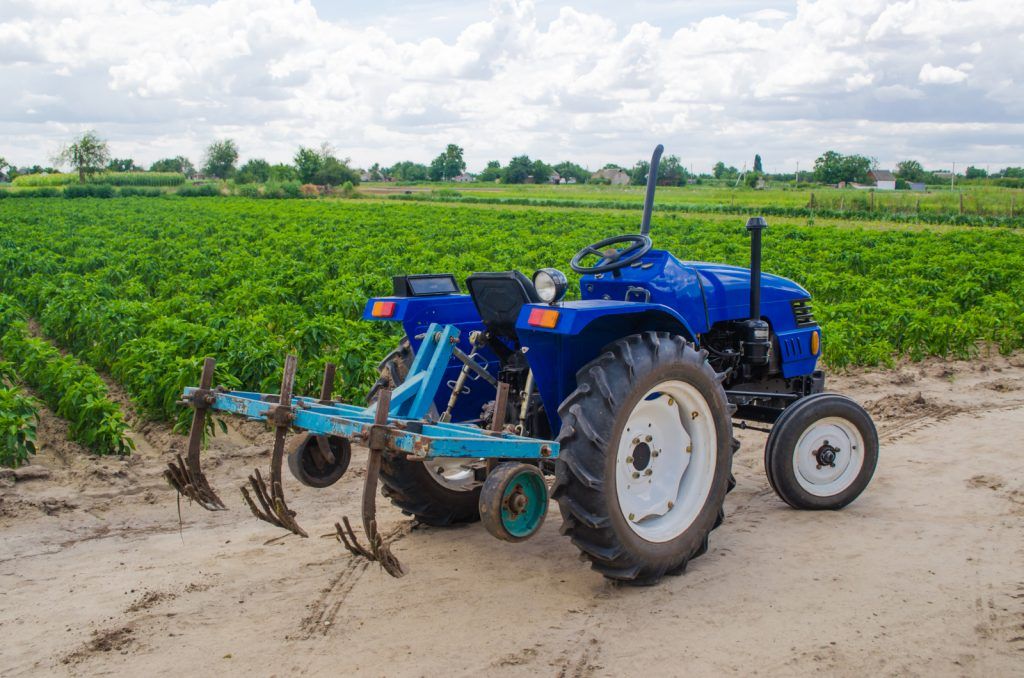
The soil changes with the plow different characteristics that contribute to issues such as:
- Prevent water from stagnating: a very compact soil will have difficulty allowing drainage, producing puddles. With the plow you give looseness to the land and add air where the water can penetrate.
- Help water to penetrate: This applies to soils that are very dry and do not retain any level of moisture and therefore the plants do not have the opportunity to access what they need to grow.
- Improve oxygenation: thanks to the fact that the plow incorporates air, the soil has the capacity to retain more of the oxygen that plants need to live.
- Change the structure of the soil: by removing the soil in depth it will be possible to mix the different structures that are present in each of its layers. In this way, it will be possible to make a very clay soil become a little more sandy and vice versa, just to mention an example.
- Control the temperature: thanks to the plow it is possible to improve the temperature conditions of the soil, especially when there have been climatic changes in recent days.
- Increase the amount of organic matter: even the poorest soil is capable of containing a certain amount of organic matter in its deepest parts. By removing it, all this matter is distributed evenly.
The reality is that not all soils need plowing, although sometimes it is established as a mandatory practice for sowing. Before applying it, it is essential to study the characteristics of the soil and the real benefit that the plow could bring.
The reason is that a soil in good condition could be spoiled by a plow that alters the ideal conditions it already had.
plow types
The type of moldboard plow is usually determined by the method by which the plow is attached to the tractor and how it is lifted and transported. The basic types are
- Three-wheel pull type: Attaches to the tractor’s standard drawbar and is transported on its own three wheels[citation needed].
- Mounted or integrated – most use a three point hitch and have a rear wheel that is only used when ploughing. Some also have a gauge wheel to regulate the maximum depth.
- Semi Mounted – Mainly used for the larger plows. They have a rear wheel which usually supports the weight and side thrust when ploughing and sometimes the weight of the rear of the plow when it is raised. The front end of the plow is carried on the lower or draft arms of the tractor.
plow wheel
- The gauge wheel is an auxiliary wheel to maintain uniform plowing depth in various soil conditions. It is usually placed in a hanging position.
The soil wheel of the plow moves over the plowed land. - The front or rear furrow wheel of the plow moves through the furrow.
Plow Protection Devices
When a plow hits a rock or other solid obstacle, serious damage can be done unless the plow is equipped with some safety device. Damage may consist of bent or broken stock, bent standards, beams, or braces.
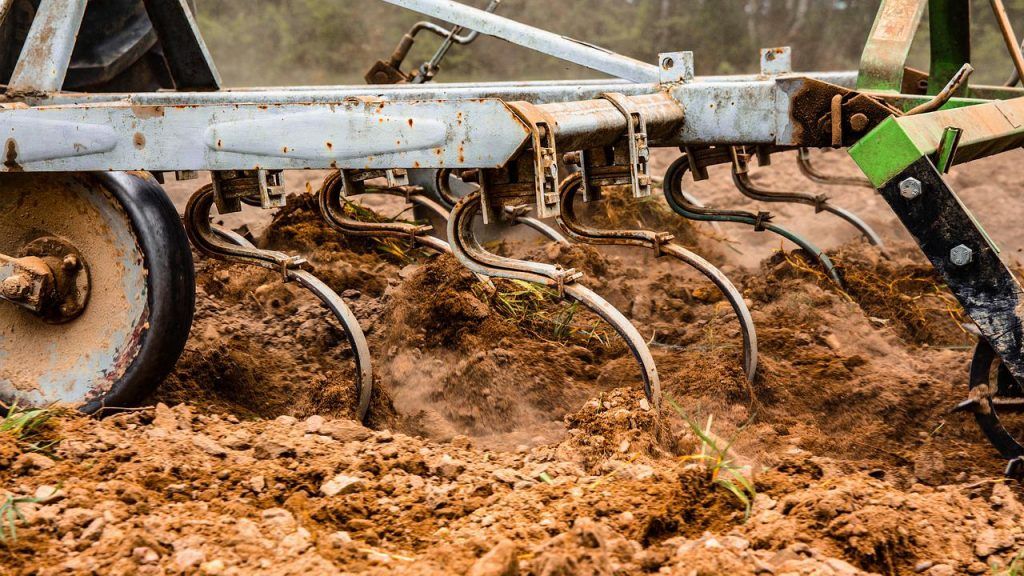
The three basic types of safety devices used on moldboard plows are a spring release device on the plow’s drawbar, a trip beam construction on each bottom, and a self-resetting design on each bottom.
In the past, spring release was used almost universally on single to three or four bottom trailed ploughs. Not practical on larger plows. When an obstacle is encountered, the spring release mechanism on the hitch allows the plow to be uncoupled from the tractor.
When a hydraulic lift is used on the plow, the hydraulic hoses are also often automatically uncoupled when the plow is uncoupled.
Most plow manufacturers offer an automatic readjustment system for difficult conditions or rocky soils. The reset mechanism allows each body to move backwards and upwards to safely pass over obstacles such as rocks hidden under the ground surface.
A heavy leaf or coil spring mechanism that holds the body in its working position under normal conditions readjusts the plow once the obstacle has been overcome.
Another type of automatic reset mechanism uses an oil ( hydraulic) and gas accumulator. Shock loads cause the oil to compress the gas. When the gas expands again, the leg returns to its working position after passing the obstacle. The simplest mechanism is a shear bolt that needs to be replaced.
Shear bolts that break when the plow body hits an obstacle are a cheaper overload protection device.
Shot beam plows are built with a hinge point on the beam. It is usually located some distance above the top of the plow bottom. The bottom is held in the normal plowing position by a spring-loaded latch.
When an obstacle is encountered, the entire bottom is released and hinges back and up to go over the obstacle.
It is necessary to back up the tractor and plow to reposition the bottom. This construction is used to protect individual funds.
It has been used extensively on European and Australian plows. In this case, the beam is hinged at a point almost above the tip of the share. The bottom is held in the normal position by a set of springs or a hydraulic cylinder on each bottom.
When an obstacle is encountered, the bottom of the plow hinges back and up so that it passes over the obstacle, without stopping the tractor and plow. The bottom automatically returns to the normal plowing position as soon as the obstacle is overcome, without interrupting the forward movement.
The auto-reset design allows for greater efficiency in the field as stone shutdowns are virtually eliminated. It also reduces the costs of broken fences, beams and other parts.
The quick reset action helps to do a better plowing job, as large areas of ground are not left unplowed, as is the case when a plow is lifted on a stone.


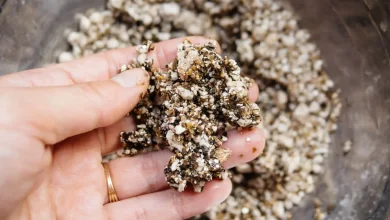
![Photo of Rose Cuttings: [Concept, Season, Rooting and Planting]](https://www.complete-gardening.com/wp-content/uploads/2022/08/rose-cuttings-concept-season-rooting-and-planting-390x220.jpg)
![Photo of How to Plant Tigernut: Planting Method in a [Complete Guide]](https://www.complete-gardening.com/wp-content/uploads/2021/06/plantar-chufa-390x220.jpg)